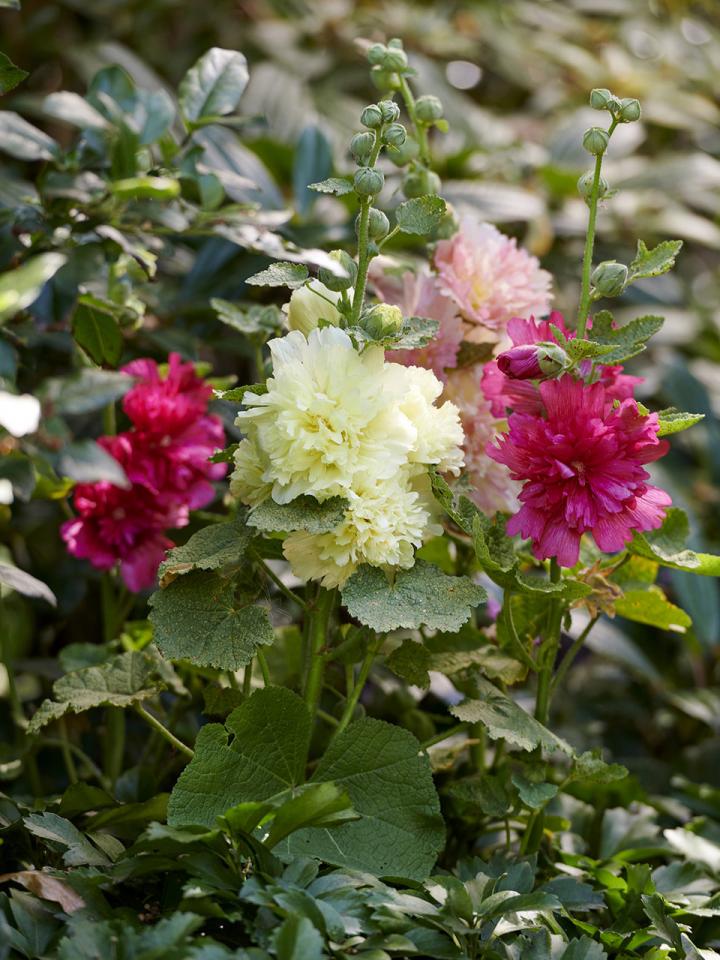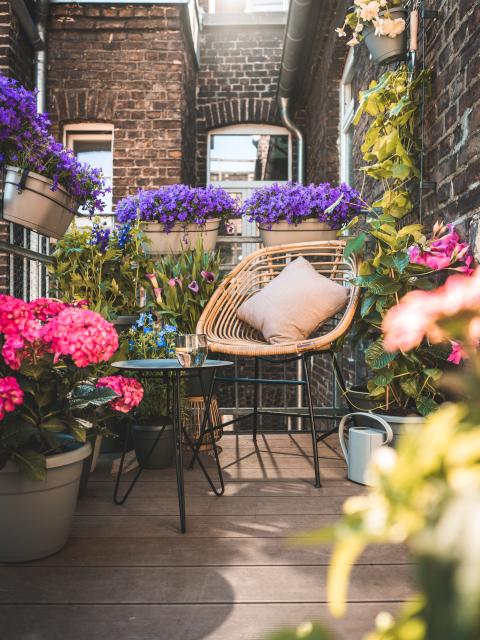Large green leaves and long stems that end in a radiant flowering torches: you can spot hollyhocks (botanical name Alcea) a long way off. As a classic summer flower this plant likes to be placed against a wall or fence that reflects the heat. The flowers are white, pastel-coloured or dark red. There are single and double hollyhocks, and all varieties are a paradise for bumblebees, honeybees and insects. The plant flowers from June to September, and reaches a height of 1 to 1.5 metres on average, although there are outliers that can achieve twice that. Hollyhocks occupy a comparatively small footprint, which makes them a useful addition for small borders, urban front gardens and sheltered courtyards.
From exotic to native
Hollyhock is a generally biannual plant from the mallow family. The plant grows in south-west China and increasing trade brought it to Europe at the start of the 16th century. Hollyhocks are self-seeding, and have consequently spread ever further: in summer they flower almost as far north as the Arctic Circle.
Trivia
- In the world of plants the hollyhock symbolises fertility. At the end of its flowering, when the leaves start to droop a bit, the plant produces a round ‘box’ containing seeds. Those boxes fall on the ground, break open and spread their seed there or are taken away by birds who break them open elsewhere.
- What is very unusual is that the seed boxes can also contain seeds with a different colour from the parent plant. That is another reason why the hollyhock represents fertility.
- The hollyhock is one of the most common flowers in Flemish Old Masters’ paintings, and it can also be frequently found in Art Nouveau decoration and art.






